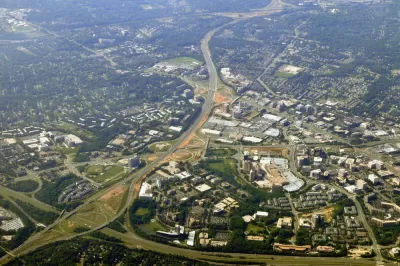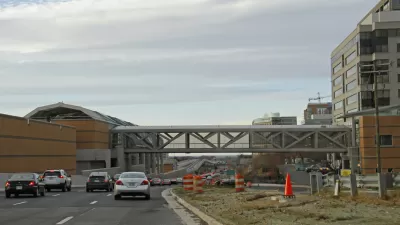The Silver Line opened two and a half months ago. Already, with strong ridership in both directions, some businesses are seeing new opportunities.

But after two months of Silver Line service, questions remain: Will people move near these stations? Are nearby businesses seeing a boost to their bottom lines?
Commuter numbers for the five new stations suggest good things. On September 24, WMATA announced that after less than two months, 30,000 combined trips are being taken to or from Silver Line stations on weekdays. According to Metro, “the new line is already performing at 60 percent of its projected ridership for the end of the first full year of service.”
About a third of these trips are being made by new riders, the remainder, Metro estimates, are former Orange Line commuters who have switched to a closer station.

Population boom
Even before the Silver Line opened, new apartment buildings on the line have been filling up. The Ascent, a new high-rise luxury apartment close to the Spring Hill metro station, began accepting residents in April and is leasing at a pace that will have the 404-unit building filled in two years. The developer is so confident in Tysons' potential as a budding metropolis that it has broken ground on a second building, even closer to the Metro.
Greystar managing director Brandon Henry told the Washington Post he never thought the building would open before the Silver Line. He also didn’t anticipate such a rapid change in the area.
“I expected people to have rail come and then it would slowly build but people have really jumped in and gotten ahead," Henry told the Post.
These are just two of the dozen projects and 10,000 residential units targeted for the empty lots surrounding the new metro stations. Because of these, Tysons is expected to grow its population from 21,000 to over 100,000 by the year 2050.
FULL STORY: How the Silver Line may already be remaking Tysons

Alabama: Trump Terminates Settlements for Black Communities Harmed By Raw Sewage
Trump deemed the landmark civil rights agreement “illegal DEI and environmental justice policy.”

Study: Maui’s Plan to Convert Vacation Rentals to Long-Term Housing Could Cause Nearly $1 Billion Economic Loss
The plan would reduce visitor accommodation by 25% resulting in 1,900 jobs lost.

Planetizen Federal Action Tracker
A weekly monitor of how Trump’s orders and actions are impacting planners and planning in America.

Waymo Gets Permission to Map SF’s Market Street
If allowed to operate on the traffic-restricted street, Waymo’s autonomous taxis would have a leg up over ride-hailing competitors — and counter the city’s efforts to grow bike and pedestrian on the thoroughfare.

Parklet Symposium Highlights the Success of Shared Spaces
Parklets got a boost during the Covid-19 pandemic, when the concept was translated to outdoor dining programs that offered restaurants a lifeline during the shutdown.

Federal Homelessness Agency Places Entire Staff on Leave
The U.S. Interagency Council on Homelessness is the only federal agency dedicated to preventing and ending homelessness.
Urban Design for Planners 1: Software Tools
This six-course series explores essential urban design concepts using open source software and equips planners with the tools they need to participate fully in the urban design process.
Planning for Universal Design
Learn the tools for implementing Universal Design in planning regulations.
Caltrans
Smith Gee Studio
Institute for Housing and Urban Development Studies (IHS)
City of Grandview
Harvard GSD Executive Education
Toledo-Lucas County Plan Commissions
Salt Lake City
NYU Wagner Graduate School of Public Service




























